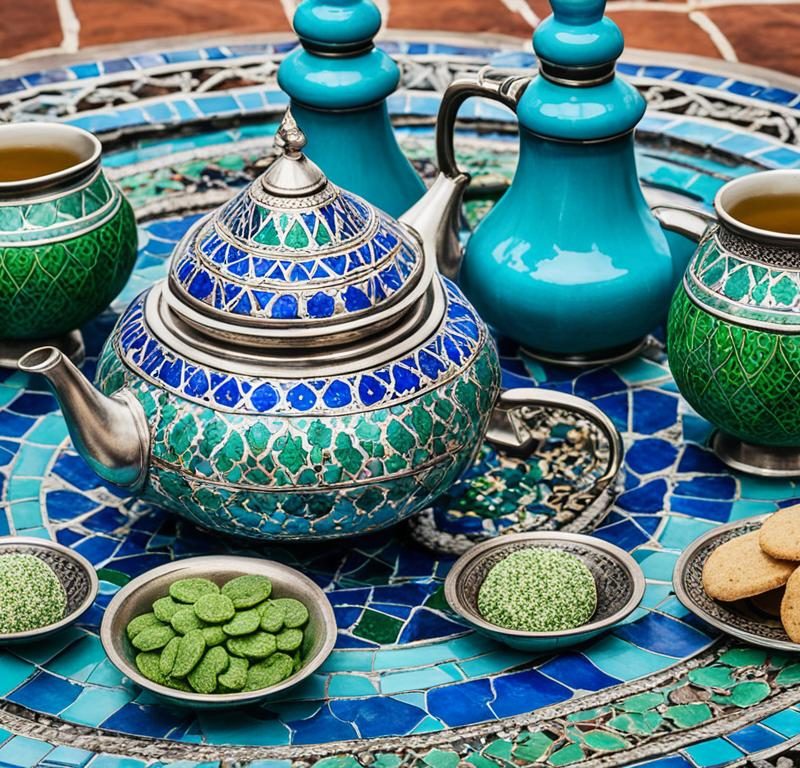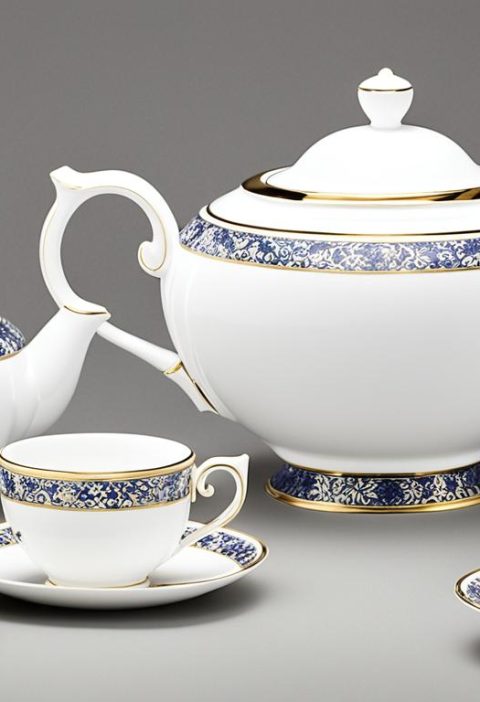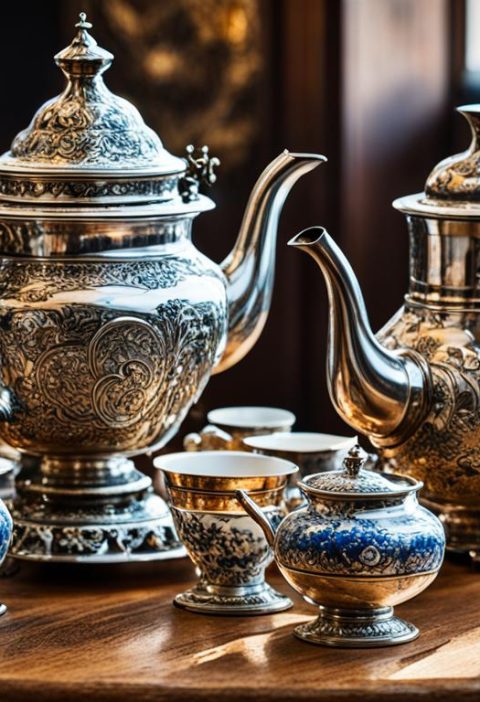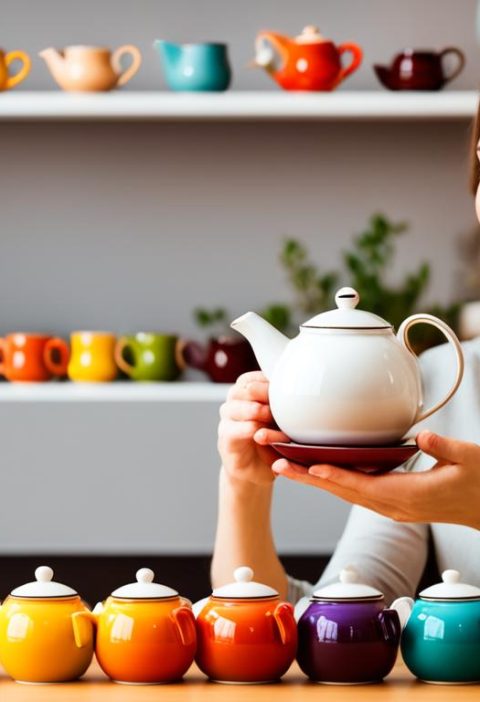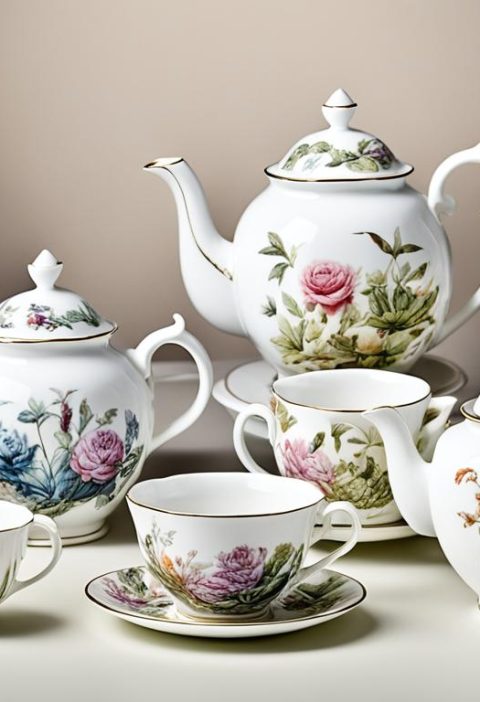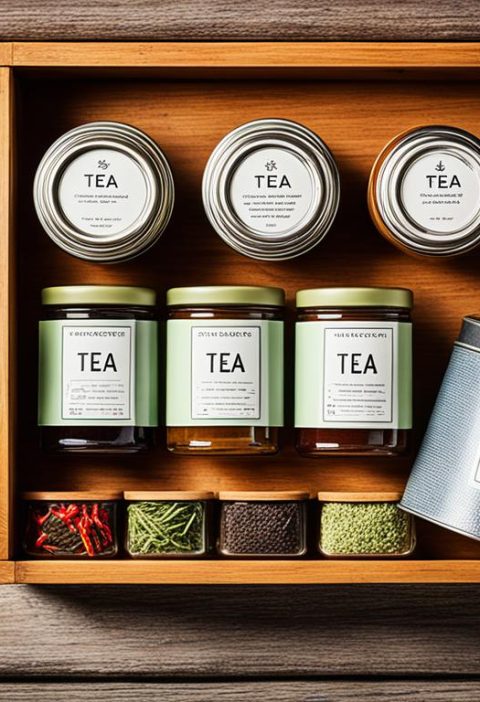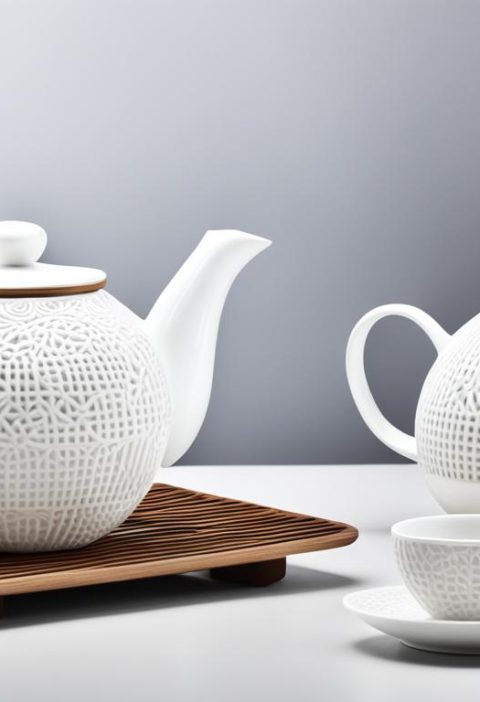The Moroccan tea set is not just tableware; it is a cherished symbol of Moroccan hospitality, rich in history and cultural significance. The tea ritual in Morocco is a meticulous process, from selecting tea leaves to pouring the golden brew into intricately designed glasses. Moroccan tea sets are known for their intricate patterns, traditional craftsmanship, and the use of silver teapots, delicate tea glasses, and decorative trays. The artful world of Moroccan tea set designs is a reflection of centuries-old customs and diverse civilizations.
The Journey of Moroccan Tea Sets: From Origins to Evolution
The story of Moroccan tea sets is intertwined with the rich tapestry of Moroccan tea culture, a tradition that dates back centuries. Influenced by Arab traders and the herbal infusions of the Berber tribes, Moroccan tea sets have evolved and adapted over time, reflecting the changing tastes and cultural influences that have shaped the nation’s tea rituals.
Tea Set Origins
The origins of tea culture in Morocco can be traced to the Arab traders who brought tea to the region. The introduction of tea into Moroccan society blended harmoniously with the existing herbal infusions of the Berber tribes, creating a unique Moroccan tea tradition. Initially, tea was considered a courtly privilege, with the elite savoring the rich flavors of this newfound beverage.
Arab Influence on Moroccan Tea
The Arab influence on Moroccan tea cannot be understated. Arab traders played a pivotal role in introducing tea to Morocco, forever altering the nation’s culinary landscape. With their extensive knowledge of tea cultivation and preparation, Arabs enhanced the tea-drinking experience by perfecting the art of tea brewing and introducing new blends and flavors. Arab influence continues to permeate Moroccan tea culture, with traditional tea recipes infused with aromatic spices such as mint and orange blossom.
Berber Tea Traditions
Before the arrival of tea, the Berbers had a rich tradition of herbal infusions. The integration of tea into Berber culture was seamless, as the tribal communities embraced this new beverage while incorporating their own customs and traditions. Today, Berber tea traditions are an integral part of Moroccan tea culture, with the iconic mint tea, also known as “Maghrebi mint tea” or “Berber whiskey,” being one of the most popular tea variations in the country.
Evolving Tea Rituals
As Moroccan tea culture expanded beyond the royal court, the tea ritual underwent evolution and transformation. Tea became a widespread tradition, symbolizing hospitality, friendship, and tradition. Moroccan tea sets adapted to meet the changing tastes and demands of the population, with intricate teapots, delicate tea glasses, and decorative trays becoming synonymous with Moroccan tea ceremonies.
The Cultural Tapestry of Moroccan Tea Sets
The journey of Moroccan tea sets reflects the diverse cultural influences that have shaped Morocco’s tea culture. From the Arab traders who introduced tea to the region to the Berber tribes who embraced it with open arms, Moroccan tea sets have become a symbol of cultural cohesion and unity. The exquisite craftsmanship of the teapots, the intricate designs of the tea glasses, and the decorative motifs adorning the trays all tell the story of Morocco’s vibrant tea culture.
Influences on Moroccan Tea Sets
| Influence | Description |
|---|---|
| Arab Traders | Introduced tea to Morocco and perfected the art of tea brewing |
| Berber Tribes | Incorporated tea into their existing herbal infusion traditions |
| Other Cultures | Influenced the evolving designs and styles of Moroccan tea sets |
Symbolism and Significance of Moroccan Tea Sets
Moroccan tea sets hold a profound symbolic meaning and great significance in Moroccan culture. The act of drinking tea in Morocco goes beyond a mere beverage; it is a deeply rooted communal ritual that represents hospitality, relaxation, and social connection.
When it comes to Moroccan hospitality and tea serving, the traditional Moroccan tea set plays a central role. It is beautifully crafted and carefully designed to create an exquisite experience for both the tea server and the guest. The set typically includes a silver teapot, delicate tea glasses, a decorative tray, and sometimes a sugar bowl.
The act of pouring and serving tea in Moroccan culture is seen as an expression of generosity and respect. The tea server skillfully pours the tea into the tea glasses from a height to create a frothy foam, a technique known as “high pouring.” This elegant gesture demonstrates the host’s attention to detail and his or her desire to provide a memorable experience for the guest.
Tea in Moroccan culture is not only a symbol of hospitality; it is also a symbol of power and diplomacy. Historically, Moroccan rulers used tea as a diplomatic tool, gifting silver teapots filled with tea and sugar to tribal leaders to strengthen alliances and establish peaceful relations. This diplomatic use of tea showcased the ruler’s influence and served as a gesture of goodwill and friendship.
The Ritual of Moroccan Tea
The Moroccan tea ritual is a captivating experience. It begins with the selection of the finest tea leaves, often green tea with mint, followed by the brewing process. The tea is brewed in the silver teapot over a small flame, allowing the flavors to infuse.
Once brewed, the tea is poured into the tea glasses, with the host’s skillful high pouring technique ensuring a frothy foam on top. The glasses are then placed on the decorative tray, adorned with geometric patterns and intricate designs—a testament to the craftsmanship and attention to detail that goes into creating a Moroccan tea set.
The tea is served with a generous portion of sugar, giving it a sweet and refreshing taste. This combination of tea, mint, and sugar creates a unique flavor profile that is synonymous with Moroccan tea.
A Symbol of Moroccan Culture
Moroccan tea sets not only symbolize hospitality and power but also reflect the rich Moroccan culture and traditions. They are often adorned with traditional motifs and patterns, showcasing the country’s diverse influences, ranging from Arab, Berber, and Moorish designs to geometric and floral patterns.
The exquisite craftsmanship that goes into creating Moroccan tea sets is a testament to the country’s artistic heritage. Experts in the art of silversmithing meticulously create the silver teapots, while glass artisans skillfully cut and shape the delicate tea glasses. Each element of the tea set represents a unique piece of Moroccan art, capturing the essence of Moroccan culture and craftsmanship.
Celebrated for their beauty and cultural significance, Moroccan tea sets have captivated tea enthusiasts worldwide. Whether used for traditional tea ceremonies or as decorative pieces, they continue to be an iconic symbol of Moroccan hospitality, power, and the artistry that defines the country’s tea culture.
The Craftsmanship and Design of Moroccan Tea Sets
Moroccan tea sets are a testament to exquisite craftsmanship and meticulous attention to detail. Each piece showcases the artistry and skill of the artisans who create them, making them truly unique and special.
What sets Moroccan tea sets apart?
The Moroccan tea set craftsmanship is unparalleled, with every element of the set carefully designed and crafted to perfection. One of the standout features of Moroccan tea sets is the silver teapot, which is often sourced from Sheffield, England. These teapots are not only known for their stability but also for their elegant and timeless design.
The tea glasses in a Moroccan tea set are equally impressive. Made from rock crystal or industrial crystal, they feature intricate designs and decorative motifs that add a touch of elegance to the tea-drinking experience. Each glass is a work of art in itself, reflecting the rich cultural heritage of Morocco.
Another essential component of a Moroccan tea set is the decorative tray. Made from brass or silver, these trays serve as a platform for the tea set, while also symbolizing the warm and welcoming hospitality of Moroccan culture. These trays often feature ornate patterns and designs, showcasing the attention to detail that goes into creating each piece.
What are some tips for selecting a Moroccan tea set?
When choosing a Moroccan tea set, pay close attention to the craftsmanship and design. Look for pieces that exhibit intricate patterns and fine details, as these are indicators of high-quality craftsmanship.
Consider the materials used in the tea set. Opt for silver teapots that are made with precision and solid construction. The tea glasses should be made from durable crystal and feature beautiful designs. The decorative tray should be sturdy and visually appealing.
Additionally, think about the overall aesthetic of the tea set and how it will fit into your home or tea-drinking space. Moroccan tea sets come in a variety of styles, from traditional to more contemporary designs. Choose a set that resonates with your personal taste and complements your existing decor.
How can I care for my Moroccan tea set?
To ensure the longevity of your Moroccan tea set, proper care is crucial. Here are some tips to keep your tea set in pristine condition:
- After each use, wash the teapot, glasses, and tray with warm water and mild soap.
- Avoid using harsh chemicals or abrasive cleaning agents that can damage the surface of the silver or crystal.
- Dry the tea set thoroughly with a soft cloth to prevent water spots or tarnishing.
- Store the tea set in a dry and clean location, away from direct sunlight and humidity.
- Regularly polish the silver components of the tea set to maintain their shine and luster.
Where can I find authentic Moroccan tea sets?
If you’re looking to purchase an authentic Moroccan tea set, there are several options available. You can visit local markets and souks in Morocco, where you’ll find a wide selection of tea sets crafted by local artisans.
Alternatively, you can explore online marketplaces that specialize in Moroccan home decor and handicrafts. Look for reputable sellers that source their products directly from Morocco to ensure the authenticity and quality of the tea set.
When purchasing online, pay attention to customer reviews and product descriptions to get an idea of the craftsmanship and design. It’s also worth considering the shipping and handling process to ensure your tea set arrives safely and in perfect condition.
Remember, a Moroccan tea set is not only a functional piece but also a piece of art that tells the story of Moroccan culture and tradition. Whether you’re a tea enthusiast or a collector of exquisite crafts, a Moroccan tea set is a timeless addition to your home.
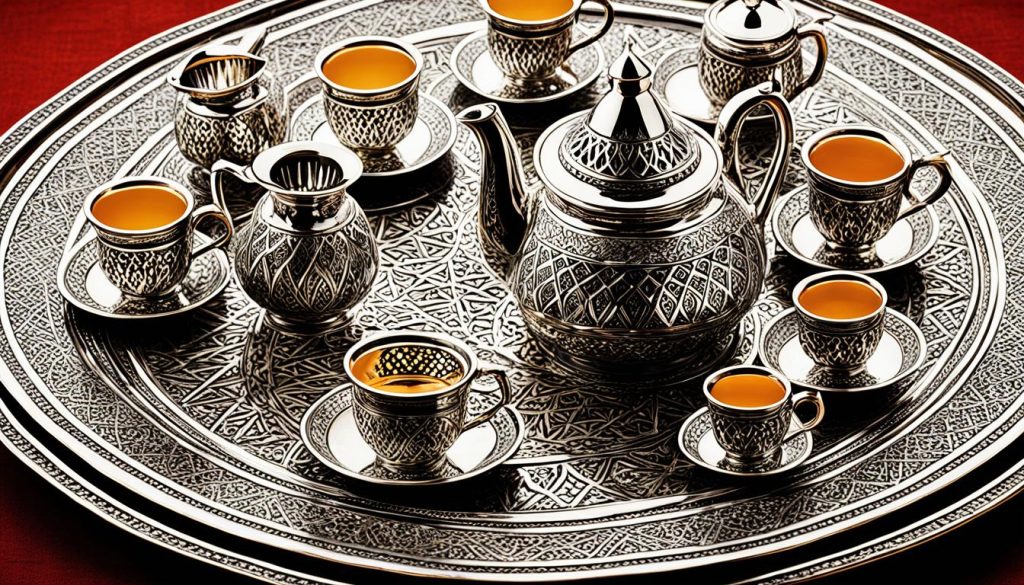
Moroccan Tea Houses and Tea Culture
Moroccan tea houses, also known as “qahwa,” are an integral part of Moroccan culture. These charming establishments hold a rich history and serve as gathering places for locals and tourists alike. With their unique architectural features and inviting ambiance, Moroccan tea houses offer an immersive experience that celebrates the country’s tea culture.
What is the significance of Moroccan tea houses?
Moroccan tea houses hold cultural significance as social spaces where friends, family, and acquaintances come together to enjoy tea and engaging conversations. They provide a relaxing atmosphere where visitors can unwind and embrace the Moroccan way of life.
How does Moroccan tea house architecture reflect the country’s culture?
Moroccan tea houses enchant visitors with their stunning architecture, which seamlessly weaves together elements of Islamic, Berber, and Andalusian influences. One of the prominent features is the design of the courtyards or patios, adorned with vibrant mosaic tiles and lush greenery, creating a visually captivating setting.
What can one expect to find inside a Moroccan tea house?
Upon entering a Moroccan tea house, you’ll find yourself surrounded by the enchanting world of Moroccan design. Zellige tile work, known for its intricate geometric patterns, graces the walls, lending a sense of elegance and charm. Traditional lanterns cast a soft glow, creating a warm and inviting atmosphere. The furniture is ornate, often showcasing traditional craftsmanship.
What contributes to the ambiance and experience of Moroccan tea houses?
The ambiance of Moroccan tea houses goes beyond just the architecture and decor. It also encompasses the hospitable service, the aromatic scents of tea blends filling the air, and the gentle chatter of patrons enjoying their tea. The experience of sipping tea in a Moroccan tea house allows visitors to immerse themselves in the Moroccan tea culture and savor every moment.
Are there any traditional customs or rituals associated with Moroccan tea houses?
Yes, partaking in the Moroccan tea ceremony is a cherished tradition. The tea is carefully prepared and served in beautiful tea glasses. The host pours the tea from a traditional silver teapot into the glasses from a height, creating a frothy layer known as the “crown.” This ritual adds a touch of theater and ensures the perfect infusion of flavors.
| Feature | Details |
|---|---|
| Courtyard Design | Adorned with mosaic tiles and lush greenery |
| Interior Decor | Zellige tile work, traditional lanterns, and ornate furniture |
| Ambiance | Relaxing atmosphere, hospitable service, and aromatic tea scents |
| Tea Ceremony | Traditional silver teapot, beautiful tea glasses, and dramatic pouring technique |
Conclusion
In conclusion, Moroccan tea sets are not just beautiful tableware; they are a representation of the rich culture and traditions of Moroccan tea rituals. The intricate patterns and traditional craftsmanship found in Moroccan tea set designs reflect the deep cultural and historical significance of this age-old tradition. The tea ritual in Morocco holds a special place in the hearts of Moroccans, symbolizing hospitality, friendship, and tradition.
The journey of Moroccan tea sets, from their origins to their evolution, showcases the blending of different cultures and influences over time. Introduced by Arab traders and influenced by the herbal infusions of the Berber tribes, Moroccan tea has become an integral part of Moroccan society. As the tea set designs adapted and evolved, they continued to carry the essence of Moroccan hospitality and the artistry of Moroccan craftsmanship.
Moroccan tea houses, known as “qahwa,” play a significant role in Moroccan tea culture. These vibrant establishments offer not only the perfect ambiance for savoring a cup of tea but also a variety of traditional dishes to complement the tea experience. With their unique architectural features and intricate decor, Moroccan tea houses provide a captivating setting for socialization and relaxation.
In summary, the artful world of Moroccan tea set designs continues to captivate and inspire tea enthusiasts around the world. Whether it’s the ornate silver teapots, delicate tea glasses, or decorative tea trays, each piece holds its own story and adds to the charm of the Moroccan tea culture. So, the next time you sip a cup of Moroccan tea, let it transport you to the enchanting world of Moroccan tea rituals and the warmth of Moroccan hospitality.
